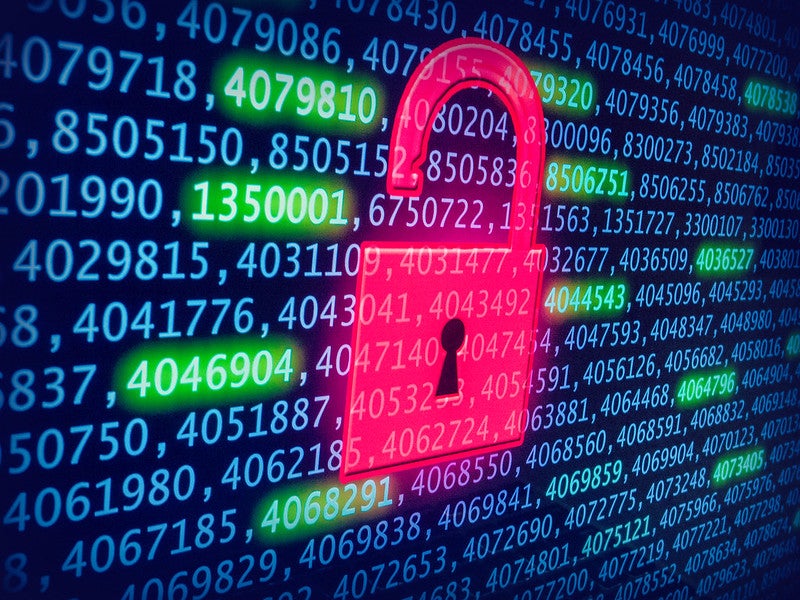On Oct. 11, cybersecurity professionals in Wisconsin will gather to address the industry growth and workforce training necessary to keep up with constantly evolving cybersecurity threats.
Now entering its fifth year, the Milwaukee Cybersecurity Summit is hosted by the Milwaukee School of Engineering and Brookfield-based company SysLogic, Inc.
Paul Doucas from SysLogic told WPR’s “Wisconsin Today” that education of current — and future — cybersecurity professionals is a top priority of the summit. That’s why, he said, students can attend for free and proceeds will go toward a scholarship fund administered by the Midwest Cyber Security Alliance.
News with a little more humanity
WPR’s “Wisconsin Today” newsletter keeps you connected to the state you love without feeling overwhelmed. No paywall. No agenda. No corporate filter.
The summit will feature seminars led by corporate leaders from Wisconsin companies like the Boldt Company, Children’s Wisconsin and Foley & Lardner. Doucas said seminar attendees will share strategies on how to keep up with the evolving needs of the cybersecurity landscape.
Also during the interview with “Wisconsin Today,” Doucas talked about what support the industry needs to protect itself from both domestic and international cyber threats.
The following was edited for clarity and brevity.
Kate Archer Kent: What are some of the biggest cybersecurity vulnerabilities?
Paul Doucas: One of the biggest types of cyberattacks is called ransomware. In 2021, about every 11 seconds, a business fell victim to ransomware. That was up from 14 seconds in 2019. The frequency of ransomware attacks on governments, businesses, consumers and devices is going to continue to rise over the next seven years, and it’s expected to hit one victim every two seconds by 2031.
When you think about that, think about all the different digital technologies that companies and people employ today, including devices from homes — refrigerators and thermostats that talk over the Internet — to companies and devices that support their businesses. They are all exposed to cyber risk.
KAK: In May, a ransomware attack hit Ascension, a health system that has hospitals in Wisconsin. It brought down their electronic health records at around 140 hospitals around the country. What is effective crisis communication when a cyber attack happens?
PD: Organizations like Ascension health care or other large entities will have very detailed plans on what happens if a ransomware attack occurs.
Those plans employ strategies like, “How do we revert back to maintaining operations for the enterprise?” as well as, “How do we deal with and maintain operations?”
KAK: Should companies negotiate with hackers on their data breaches? Is there a precedent with negotiations?
PD: I personally don’t think so. I think there are opportunities around incident response, how to deal with hackers and to recover from attacks that should be employed first. Some of these ransomware attacks approach hundreds of millions of dollars in ransom to restore operations, which can obviously become a major fiscal obstacle for public and private sector entities.
KAK: A 2023 cybersecurity jobs report says there will be 3.5 million unfilled jobs in the cybersecurity industry through next year. How do you scale up this workforce?
PD: I think it starts with academic entities really investing in cybersecurity programs and degrees. Milwaukee School of Engineering has been a leader in that space, which is one of the reasons why they are a local partner of ours and why we do this event with them. Filling that job gap is a critical issue.
This cybersecurity summit has been focused on education since its inception five years ago, and in fact, the aim is to drive more interest and awareness. Education continues to be a big challenge for the cybersecurity space.
KAK: What should Wisconsin policymakers be working on to address emerging cybersecurity issues in our state?
PD: I think there’s an opportunity to discuss legislation to support companies in their defenses and the actions that they take to ensure that when cyber attacks occur, they don’t have a material impact on how we operate as a state.
Cyber investment at the federal level is one of the top three expense line items in the Department of Defense’s budget. So what does that opportunity look like? It’s really any legislation or support the state can provide to public and private sector entities toward improving our defenses, more collaboration and sharing best practices.



